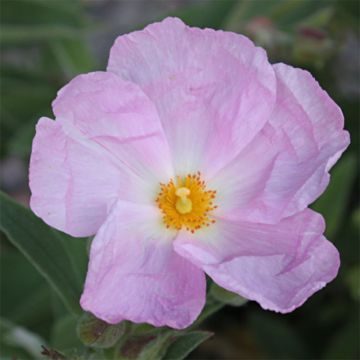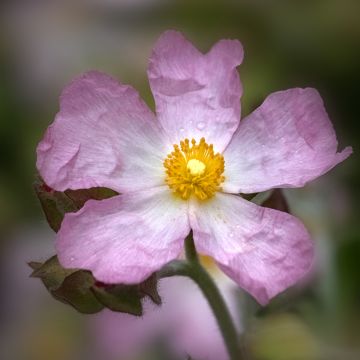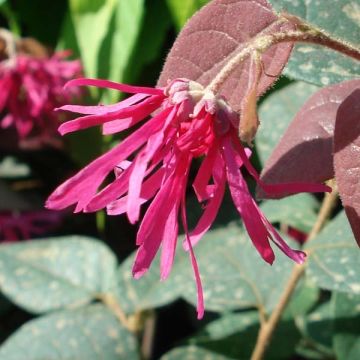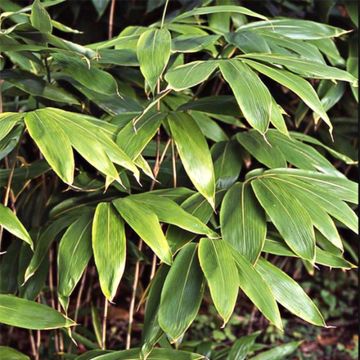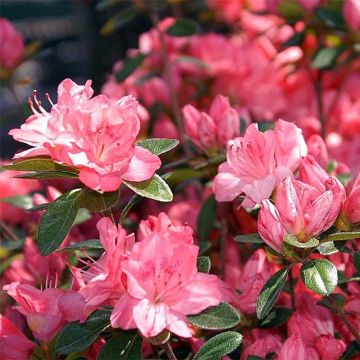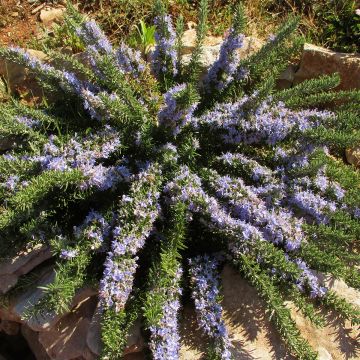

Halimiocistus wintonensis Merrist Wood Cream


Halimiocistus wintonensis Merrist Wood Cream - Halimiociste crème à macule pourpre
Halimiocistus wintonensis Merrist Wood Cream
(x) Halimiocistus wintonensis Merrist Wood Cream
winton rock rose
very vigorous young plant
Jean-Michel, 05/11/2021
This plant carries a 24 months recovery warranty
More information
We guarantee the quality of our plants for a full growing cycle, and will replace at our expense any plant that fails to recover under normal climatic and planting conditions.
From €5.90 for pickup delivery and €6.90 for home delivery
Express home delivery from €8.90.
Delivery to Corse prohibited: UE law prohibits the import of this plant from mainland France to Corse as part of the fight against Xylella fastidiosa. Please accept our sincere apologies.
More information

Does this plant fit my garden?
Set up your Plantfit profile →
Description
x Halimiocistus wintonensis 'Merrist Wood Cream', also known as cistus x revolii 'Merrist Wood Cream', is a small evergreen, quite hardy Mediterranean bush. It produces a profusion of ephemeral flowers similar to wild roses in spring, with crumpled white silk, streaked with cream, and a heart widely spotted with purple. The fragile flowers only live for a day but are continuously renewed among the thick, greenish-grey foliage. This plant is strong, armed against drought, piercing rocky ground with its deep roots to draw strength. This attractive hybrid is also drought-tolerant. Give it a dry slope, plenty of sun, and lots of warmth in a sheltered area of the garden.
x Halimiocistus wintonensis 'Merrist Wood Cream' belongs to the Cistaceae family. This hybrid appeared in cultivation in England through the cross-breeding of Halimium lasianthum 'Formosum' and Cistus salvifolius. This branching bush has a spreading habit. It reaches a height of 60 cm (23.6 in), with a diameter of 80 cm (31.5 in). The flowering takes place in spring or early summer depending on the climate and lasts for about three weeks. The flowers reflect the union of its parents, with round, fully open corollas measuring 4 to 4.5 cm (1.6 to 1.8 in) in diameter, washed with cream, and enhanced by a large dark red spot encircling the bright yellow heart. The petals slightly overlap. They only live for a day, covering the ground with their petals in the late afternoon, but will already be replaced the next morning. The persistent foliage is composed of thick, wavy, ovate, greenish-grey, downy leaves, measuring from 3 to 5 cm (1.2 to 2 in) in length.
x Halimiocistus wintonensis 'Merrist Wood Cream' is a rock and poor soil plant, perfectly adapted to drought. Create a group by mixing the foliage and scents of lavender (blue, white, pink), rosemary (creeping or upright), thyme (T.vulgaris, T. polytrichus), sage (Salvia x jamensis or officinalis), oregano, teucriums (T.chamaedrys, T. x lucidrys, T. hircanicum), Californian poppies, catmints, ballotes and dry soil euphorbias (E.characias, E. cyparissias). Cultivating in large pots is possible, by ensuring good drainage and providing abundant but spaced-out watering in the summer, allowing the substrate to dry out between waterings.
The cistus is a pioneer plant, linked to fire ecology. In nature, seed germination is subject to the intense and brief heat associated with fires. They quickly colonize devastated areas, allowing other plants to establish themselves sheltered by their branches. With a relatively short lifespan of 10 to 15 years, cistus then make way for taller shrubs that deprive them of sunlight.
Report an error about the product description
Halimiocistus wintonensis Merrist Wood Cream in pictures


Plant habit
Flowering
Foliage
Botanical data
(x) Halimiocistus
wintonensis
Merrist Wood Cream
Cistaceae
winton rock rose
Cultivar or hybrid
Other Cistus - Rockrose
Planting and care
x Halimiociste wintonensis 'Merrist Wood Cream' requires a perfectly drained, stony or sandy, poor, even limestone soil. It cannot thrive without sunlight and likes to have warm roots. Under these conditions, it is hardy down to -10 or -12°C (14 or 10.4 °F) and will live longer. Mulch it in winter in the coldest regions and protect it from the cold as much as possible. Place it in the warmest corner of the garden, in full sun against a south-facing wall, in a stony or sandy slope in any substrate that does not retain moisture which would be fatal to it in winter or summer which is its dormant period. The combination of heat and humidity leads to the development of a fungus that attacks the plant's collar and will be fatal to it as much as a Siberian cold. You can prune the stems after flowering to encourage the plant to branch out. Avoid severe pruning.
Planting period
Intended location
Care
-
, onOrder confirmed
Reply from on Promesse de fleurs
Evergreen shrubs
Haven't found what you were looking for?
Hardiness is the lowest winter temperature a plant can endure without suffering serious damage or even dying. However, hardiness is affected by location (a sheltered area, such as a patio), protection (winter cover) and soil type (hardiness is improved by well-drained soil).

Photo Sharing Terms & Conditions
In order to encourage gardeners to interact and share their experiences, Promesse de fleurs offers various media enabling content to be uploaded onto its Site - in particular via the ‘Photo sharing’ module.
The User agrees to refrain from:
- Posting any content that is illegal, prejudicial, insulting, racist, inciteful to hatred, revisionist, contrary to public decency, that infringes on privacy or on the privacy rights of third parties, in particular the publicity rights of persons and goods, intellectual property rights, or the right to privacy.
- Submitting content on behalf of a third party;
- Impersonate the identity of a third party and/or publish any personal information about a third party;
In general, the User undertakes to refrain from any unethical behaviour.
All Content (in particular text, comments, files, images, photos, videos, creative works, etc.), which may be subject to property or intellectual property rights, image or other private rights, shall remain the property of the User, subject to the limited rights granted by the terms of the licence granted by Promesse de fleurs as stated below. Users are at liberty to publish or not to publish such Content on the Site, notably via the ‘Photo Sharing’ facility, and accept that this Content shall be made public and freely accessible, notably on the Internet.
Users further acknowledge, undertake to have ,and guarantee that they hold all necessary rights and permissions to publish such material on the Site, in particular with regard to the legislation in force pertaining to any privacy, property, intellectual property, image, or contractual rights, or rights of any other nature. By publishing such Content on the Site, Users acknowledge accepting full liability as publishers of the Content within the meaning of the law, and grant Promesse de fleurs, free of charge, an inclusive, worldwide licence for the said Content for the entire duration of its publication, including all reproduction, representation, up/downloading, displaying, performing, transmission, and storage rights.
Users also grant permission for their name to be linked to the Content and accept that this link may not always be made available.
By engaging in posting material, Users consent to their Content becoming automatically accessible on the Internet, in particular on other sites and/or blogs and/or web pages of the Promesse de fleurs site, including in particular social pages and the Promesse de fleurs catalogue.
Users may secure the removal of entrusted content free of charge by issuing a simple request via our contact form.
The flowering period indicated on our website applies to countries and regions located in USDA zone 8 (France, the United Kingdom, Ireland, the Netherlands, etc.)
It will vary according to where you live:
- In zones 9 to 10 (Italy, Spain, Greece, etc.), flowering will occur about 2 to 4 weeks earlier.
- In zones 6 to 7 (Germany, Poland, Slovenia, and lower mountainous regions), flowering will be delayed by 2 to 3 weeks.
- In zone 5 (Central Europe, Scandinavia), blooming will be delayed by 3 to 5 weeks.
In temperate climates, pruning of spring-flowering shrubs (forsythia, spireas, etc.) should be done just after flowering.
Pruning of summer-flowering shrubs (Indian Lilac, Perovskia, etc.) can be done in winter or spring.
In cold regions as well as with frost-sensitive plants, avoid pruning too early when severe frosts may still occur.
The planting period indicated on our website applies to countries and regions located in USDA zone 8 (France, United Kingdom, Ireland, Netherlands).
It will vary according to where you live:
- In Mediterranean zones (Marseille, Madrid, Milan, etc.), autumn and winter are the best planting periods.
- In continental zones (Strasbourg, Munich, Vienna, etc.), delay planting by 2 to 3 weeks in spring and bring it forward by 2 to 4 weeks in autumn.
- In mountainous regions (the Alps, Pyrenees, Carpathians, etc.), it is best to plant in late spring (May-June) or late summer (August-September).
The harvesting period indicated on our website applies to countries and regions in USDA zone 8 (France, England, Ireland, the Netherlands).
In colder areas (Scandinavia, Poland, Austria...) fruit and vegetable harvests are likely to be delayed by 3-4 weeks.
In warmer areas (Italy, Spain, Greece, etc.), harvesting will probably take place earlier, depending on weather conditions.
The sowing periods indicated on our website apply to countries and regions within USDA Zone 8 (France, UK, Ireland, Netherlands).
In colder areas (Scandinavia, Poland, Austria...), delay any outdoor sowing by 3-4 weeks, or sow under glass.
In warmer climes (Italy, Spain, Greece, etc.), bring outdoor sowing forward by a few weeks.






































